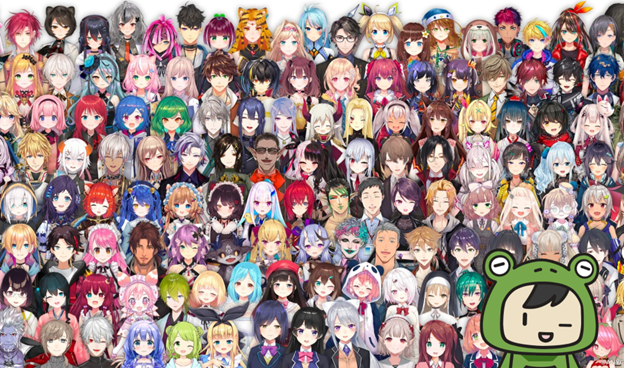You go online on Facebook, browse YouTube, or just see cartoon characters playing the latest Souls-like games like Wukong or Elden Ring.
You question what you’re looking at and notice a peculiar tag or word in their description – “VTuber”.
Sooner or later, you either go deeper into the rabbit hole or downright detest them. Love them or hate them, VTubers are now a mainstay in current mainstream media, and by the looks of it, they’re here to stay.
Let’s address the elephant in the room and talk about the “Tuber” part of Vtubers.
For the younger ones reading this, you’d probably think it’s a shortened version of YouTube, and it is. However, this term is also used on other platforms like Twitch, Facebook, and Bilibili.
With that out of the way, what are VTubers, really?
Shortened from “Virtual YouTubers,” VTubers are virtual entertainers, with an emphasis on entertainment more than on being virtual.
VTubers use avatars developed through programs like Live2D to entertain their audience.
These avatars come in many different shapes and sizes, ranging from the cute to the surreal. Some VTubers are anime characters, others are a toilet, or even just a piece of bacon.
At its core, being a VTuber means embodying the character or using that character as an online alias. In fact, the writer of this article is a VTuber. Whether it’s the character or the writer behind the avatar is for the reader to determine, preferably after visiting his streams.

There are multiple accounts as to what was the first instance of a VTuber in the wild.
Some give credence to the Annoying Orange as one of the first VTubers, as it had a voice behind a fruit avatar. Others believe Kizuna Ai was the first VTuber following her breakout popularity in 2016.
However, in reality, it’s something a bit more obscure. In 2010, visual novel maker Nitroplus used a 3D version of its mascot, Super Sonico, to give out announcements on upcoming projects or talk about herself. In essence, this is where it all started. Over the years, there have been developments like adding hand tracking and even full-body tracking, but at its core, it’s still an entertainer behind an avatar.

Before the start of this decade, VTubers were more of a niche interest rather than the entertainment powerhouse they currently are.
It all began with Kizuna Ai gaining mainstream popularity on YouTube due to the intimacy she had with her fans. It makes sense in a way, as she emulated idol culture in her interactions with viewers. Her popularity was boosted by an entire production team behind her, through the digital entertainment company Activ8 and later through Kizuna Ai Inc. The contrast between being an idol while still being human, even through an avatar, along with her swearing in her let’s play videos, made for an entertaining combo.

VTubing boomed following Kizuna Ai’s surge in popularity, and oddly enough, during the COVID pandemic, it really reached its stride.
Companies such as Hololive, AnyColor (through Nijisanji), and VShojo capitalized on the growing trend. Sure, there were some independent VTubers who also rose in popularity during this time, but the pandemic created the perfect storm to bring VTubers to the forefront.
Being in the pandemic meant nobody could actually go out, leading to more people watching streams at home and a rise in stream viewership. On top of that, what other activities could people stuck at home do? Watch TV series. The kicker? Anime became the genre of choice. A cute little shark girl, who may or may not have had a streaming background, soared in this period.
Who would’ve guessed that cute anime characters with personality would click?

While the concept of VTubing is relatively new at this point in time, following its boom, the fact that it’s reaching heights uncalled for is something to be excited about.
To be quite honest, as a VTuber fan myself, seeing my oshis (which means “favorite” in Japanese), namely Calliope Mori and Hoshimachi Suisei, be backed by Sony Music Japan, is something I’m proud of.
They’ve reached the mainstream with their music and appeared in various forms of Japanese media. And wouldn’t you know it, Mori even sang the Suicide Squad anime’s ending theme! Imagine that—the grim reaper’s apprentice and Harley Quinn are in the same world, and we get to enjoy it too.
Whether or not VTubers last long will always depend on their community. But whether we like it or not, they’re here to stay.


